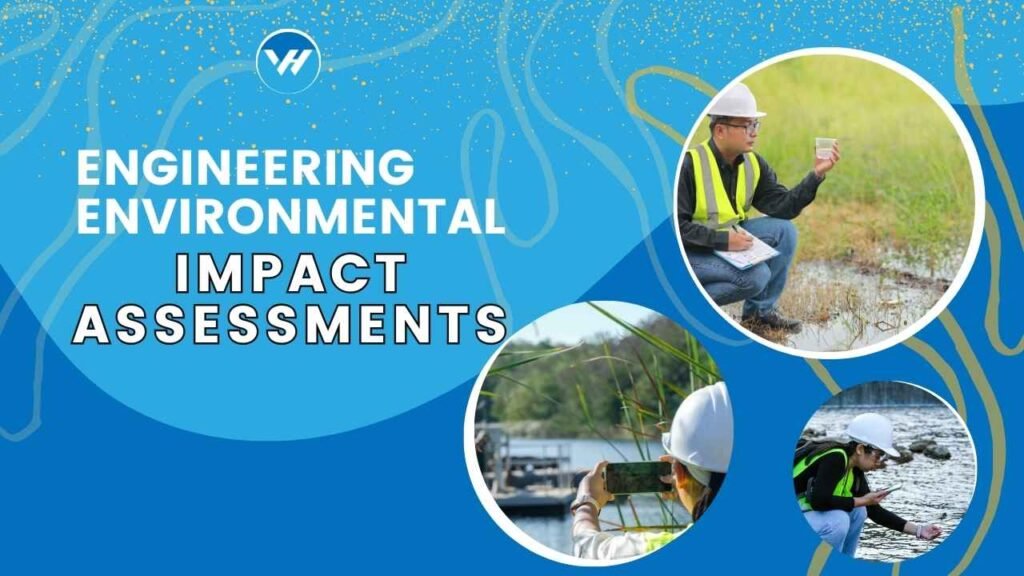An Environmental Impact Assessment (EIA) is a crucial process used to evaluate the potential environmental effects of a proposed project before it starts. Think of it as a comprehensive health check-up for the environment. Just like a doctor would assess a patient’s health before recommending treatment, an EIA examines how a project might affect the environment. The goal is to ensure that environmental considerations are taken into account, reducing the risk of unforeseen negative impacts.

Table of Contents
ToggleImportance of EIAs in Engineering Projects
EIAs are essential in engineering projects for several reasons. They help identify potential environmental issues early on, allowing for proactive measures to mitigate negative impacts. By integrating environmental considerations into project planning, EIAs can prevent costly delays and modifications later. They also ensure compliance with legal and regulatory requirements, enhancing the overall sustainability of the project.
The EIA Process
Screening and Scoping
Determining the Need for an EIA
The first step in the EIA process is screening, which determines whether a project requires a full EIA. Not all projects need an extensive assessment. For instance, small-scale projects with minimal environmental impact might skip the full EIA process. Screening involves evaluating the project’s size, location, and potential environmental impacts.
Identifying Key Issues
Once it’s determined that an EIA is necessary, the next step is scoping. This phase identifies the key environmental issues that need to be addressed. It involves consulting with stakeholders and experts to pinpoint potential areas of concern, such as impacts on local wildlife, air quality, or water resources.
Impact Prediction and Evaluation
Methods for Impact Prediction
In this phase, engineers and environmental scientists use various methods to predict the potential impacts of the project. These methods can include modeling and simulations to forecast changes in environmental conditions. For example, if a project involves construction near a river, modeling might predict how it could affect water flow and aquatic life.
Evaluating Environmental Impacts
After predicting potential impacts, the next step is evaluating them. This involves assessing the significance of each impact and determining whether it is acceptable. Evaluation helps prioritize which impacts need more attention and which can be managed effectively.
Mitigation Measures
Designing Mitigation Strategies
Mitigation measures are strategies designed to reduce or offset the negative impacts identified in the EIA. For instance, if a project threatens local wildlife, mitigation might involve creating wildlife corridors or implementing specific construction practices to minimize disturbance.
Implementing Mitigation Measures
Once mitigation strategies are designed, they must be implemented effectively. This involves integrating these measures into the project’s planning and execution stages. It also requires ongoing monitoring to ensure that the mitigation strategies are working as intended.
Key Components of an EIA Report
Executive Summary
The executive summary provides a concise overview of the EIA report, summarizing the key findings and recommendations. It’s designed for decision-makers and the public who may not have time to read the full report.
Description of the Proposed Project
This section outlines the details of the proposed project, including its scope, location, and objectives. It provides context for the environmental assessment and helps stakeholders understand what is being proposed.
Environmental Baseline Data
Baseline data is essential for understanding the current environmental conditions before the project begins. This data includes information on air and water quality, soil conditions, and existing wildlife populations.
Assessment of Environmental Impacts
This section details the predicted environmental impacts of the project and assesses their significance. It includes a thorough analysis of how the project might affect various environmental factors.
Public Consultation and Stakeholder Involvement
Public consultation is a critical part of the EIA process. It involves engaging with the community and stakeholders to gather their input and address their concerns. This ensures that the project considers the views of those who might be affected by it.
Legal and Regulatory Framework
International Guidelines and Standards
EIAs are guided by international standards and guidelines, which provide a framework for conducting assessments. These guidelines help ensure consistency and quality in the EIA process across different regions and countries.
National Regulations and Requirements
In addition to international guidelines, each country has its own regulations and requirements for EIAs. These regulations can vary significantly, so it’s important for project developers to be familiar with the specific requirements in their location.
Challenges and Best Practices in EIA
Common Challenges in Conducting EIAs
Conducting EIAs can present several challenges, such as limited data availability, complex environmental interactions, and stakeholder disagreements. Addressing these challenges requires careful planning and collaboration.
Best Practices for Effective EIAs
To overcome these challenges, adopting best practices is crucial. These practices include involving stakeholders early in the process, using accurate and up-to-date data, and employing experienced professionals to conduct the assessment.
Role of Technology in Modern EIAs
GIS and Remote Sensing
Technology plays a significant role in modern EIAs. Geographic Information Systems (GIS) and remote sensing technologies help in mapping and analyzing environmental data. These tools provide valuable insights into environmental conditions and potential impacts.
Environmental Modeling Software
Environmental modeling software allows for sophisticated simulations of environmental impacts. These models help predict changes in environmental conditions and assess the effectiveness of mitigation strategies.
Conclusion
Engineering Environmental Impact Assessments are vital for ensuring that projects are environmentally responsible and sustainable. By following a structured EIA process, involving stakeholders, and utilizing modern technology, projects can minimize their environmental footprint and contribute to a healthier planet.
Looking ahead, the field of EIA is likely to see advancements in technology and methodologies. Improved data collection, more comprehensive modeling, and greater public engagement will continue to enhance the effectiveness of EIAs in protecting our environment.
FAQs
What are the key steps in an EIA?
The key steps in an EIA include screening, scoping, impact prediction and evaluation, designing and implementing mitigation measures, and preparing the EIA report.
How long does an EIA process typically take?
The duration of the EIA process can vary depending on the project’s complexity and the regulatory requirements. It typically takes several months to over a year to complete.
What are common challenges faced during an EIA?
Common challenges include limited data availability, complex environmental interactions, stakeholder disagreements, and regulatory hurdles.
How can technology improve the EIA process?
Technology can enhance the EIA process through tools like GIS, remote sensing, and environmental modeling software, which provide better data analysis and impact prediction.





